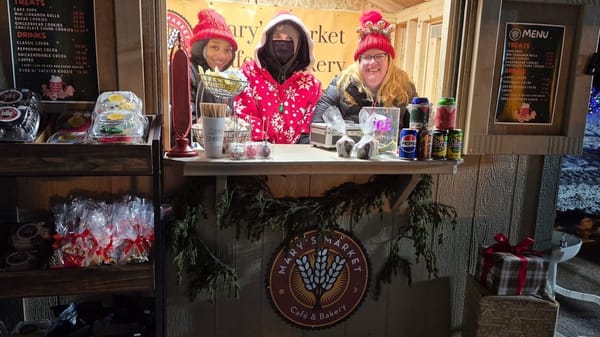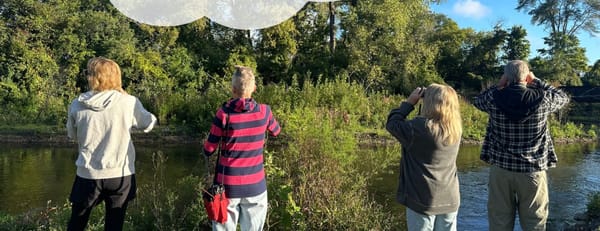Garlic Mustard: It's Baack!
Garlic mustard takes a bite out of our landscape each spring.

Garlic mustard (Alliaria petiolata), one of Illinois's most invasive plants, is appearing once again, in a yard or flower bed near you. According to Ryan Pankau of Illinois Extension, garlic mustard releases allelopathic chemicals into the soil. That's a fancy way of saying that native wildflowers and other plants don't grow well around garlic mustard. Furthermore, a single plant can produce up to 7,000 seeds - if not pulled up before it produces seeds in May. Local conservation groups often invite the community to help out at "garlic mustard pulls" around this time of year. Fortunately, if you grab it near the base, garlic mustard is easy to pull up by the roots, especially after a rain. Pankau says his kids love to pull it. It has a rich garlicky smell.
Garlic mustard is easy to recognize by its white flowers, but since flowers make seeds and seeds make weeds, you may not want to wait until the flowers appear. Garlic mustard is one of the first plants to come up in the spring, especially along the edges of the yard or fence, since it prefers not to be disturbed by mowing or gardening. It's a biennial, so it comes back from the roots next year, if you don't pull up the roots.
So where did this troublesome plant come from, if it's not native to Illinois? Unfortunately, our immigrant ancestors in the 1800’s brought it from Europe on purpose - because they liked to eat it. And it's so economical and plentiful! As you would guess from the name, the leaves taste like garlic and like mustard greens. The Edible Wild Foods website tells you all you need to know about garlic mustard: eating it may help you lose weight, protect your heart, lower your cholesterol, and even prevent cancer. Their website lists several recipes, including Garlic Mustard Horseradish, Garlic Mustard Pesto, Garlic Mustard Stuffed Mushrooms, Wild Mustard Pesto, Sesame and Wilted Green Saute, and Wild Pizza. The greens taste best before the flowers appear, but the roots and pods are also edible.
If you can't beat it, eat it.





